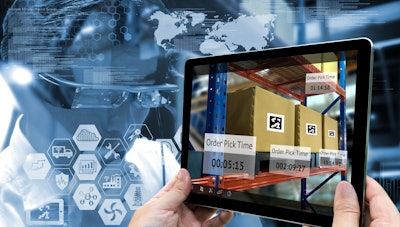
On Feb. 24, President Joe Biden signed an executive order, launching a 100-day review of supply chains critical to national security, public health and public safety. The review will target four key industries --semiconductors, critical minerals, pharmaceuticals and electric vehicle batteries, and will seek to discover opportunities to bring overseas jobs back to the country.
The Biden review is a welcome and necessary step after the unprecedented supply chain disruptions of 2020, where the Coronavirus disease (COVID-19), increasing trade friction with China and major cyberattacks like the SolarWinds breach drew the immense fragility and criticality of supply chains into focus. Only by adopting a whole-of-government approach to supply chain resilience – and by leveraging cutting-edge visibility tools – can we hope to tackle these multifaceted challenges.
Silicon shortages abound
Many of the key issues precipitating the current period of supply chain disruption can be connected back to polysilicon, the base material used to manufacture computer chips. Polysilicon shortages have been driven by a number of factors. During the early days of COVID-19, auto manufacturers cut sales forecasts as demand for consumer technology was expected to greatly outpace the demand for vehicles, with polysilicon manufacturers adjusting their sales accordingly. With the demand for vehicles returning much faster than many anticipated, there’s not enough silicon to go around.
These issues are further compounded by rising concerns over environmental, social and governance (ESG) risk connected to polysilicon. There have been multiple news stories recently regarding the prevalence of forced labor in solar panel supply chain. The industry is heavily reliant on the Xianjing region for polysilicon, but the presence of possible forced labor has led the Solar Energy Industries Association to call out human rights abuses in the region “reprehensible” and strongly encouraged companies “to immediately move their supply chains out of the region.”
Of course, ESG issues are only one factor motivating the Biden administration to closely examine the supply chain. Of even greater priority is the urgency to reduce dependence on foreign nations for critical resources, particularly China, to increase national security and bolster American economic independence. Today, just 12% of chips are made in the United States, a significant reduction from 37% in 1990.
Recently, Senate Majority Leader Chuck Schumer announced he was seeking bipartisan support from the Senate to draft legislation designed to improve economic competitiveness with China and increase American semiconductor production.
Both Senator Schumer’s announcement and the executive order come hot on the heels of the previous administration’s attempts to secure supply chains, which were enacted through a combination of executive orders, prohibitions and restrictions levied by the Treasury and Commerce departments and through provisions within the annual defense budget like NDAA Section 889 Part B. For instance, in December 2020, the Department of Commerce added over 100 Chinese companies to their restricted entities list, which had seen the addition of over 350 Chinese companies over the preceding two years.
Vaccine supply chain increases the challenge
The microchip supply chain is but one of many. Of equal, if not greater immediate concern to the nation’s wellbeing is the supply chain powering the manufacturing and distribution of the COVID-19 vaccine. Like microchips, vaccines are highly dependent on global supply chains. Few countries, if any, have the capacity to entirely manufacture and distribute themselves on the scale required to address COVID-19.
The Johnson and Johnson vaccine, for example, has contract manufacturers in seven sites in seven different countries, each of which serve a different role in the manufacturing process, requiring the drugs to frequently travel through multiple countries before arriving at their end destination. The international nature of this process adds regulatory complexity. AstraZeneca only has three approved producers in the EU, in part due to the difficulty in finding partners that meet both the region and the rest of the world’s stringent but different standards.
There’s also a host of raw materials challenges to address. Last year, Pfizer cut their expected production in half due to raw materials shortages. Some specialized components of the vaccine, like lipids, the fatty cells that actually transport the genetic code in the vaccine into human cells, are only manufactured by a handful of companies in the world. Ensuring the United States has access to a steady and secure supply of these and other specialized pharmaceutical materials will be a critical step in limiting the impact of the present and future pandemics.
In addition to the executive order, the Biden administration has already named a Supply Coordinator who will “coordinate the federal effort focused on securing, strengthening and ensuring a sustainable pandemic supply chain.”
Supply chain visibility is more important than ever
This flurry of activity and the multifaceted nature of the concerns driving it highlight the importance of securing our supply chains, bringing back American jobs and of taking action in a coordinated, strategic manner. To effectively address this crisis, we must adopt a comprehensive supply chain strategy, establishing a whole-of-government approach that encourages coordination and information sharing with industry.
Moreover, these events underline the pressing need to adopt holistic tools leveraging emerging technologies that give a complete and up-to-the-minute picture of our supply chains and the risk that often lies hidden within them. Without an accurate and up-to-date understanding of who we are truly reliant on, we cannot even begin to secure those relationships and pursue the much-needed American-based alternatives.
We now have to move – both the public and private sectors – toward operational resilience. Instead of waiting for a disaster to happen and to react, wouldn’t it be nice to know the information ahead of time to be able to preempt and position our organizations, so we aren’t disrupted?



















